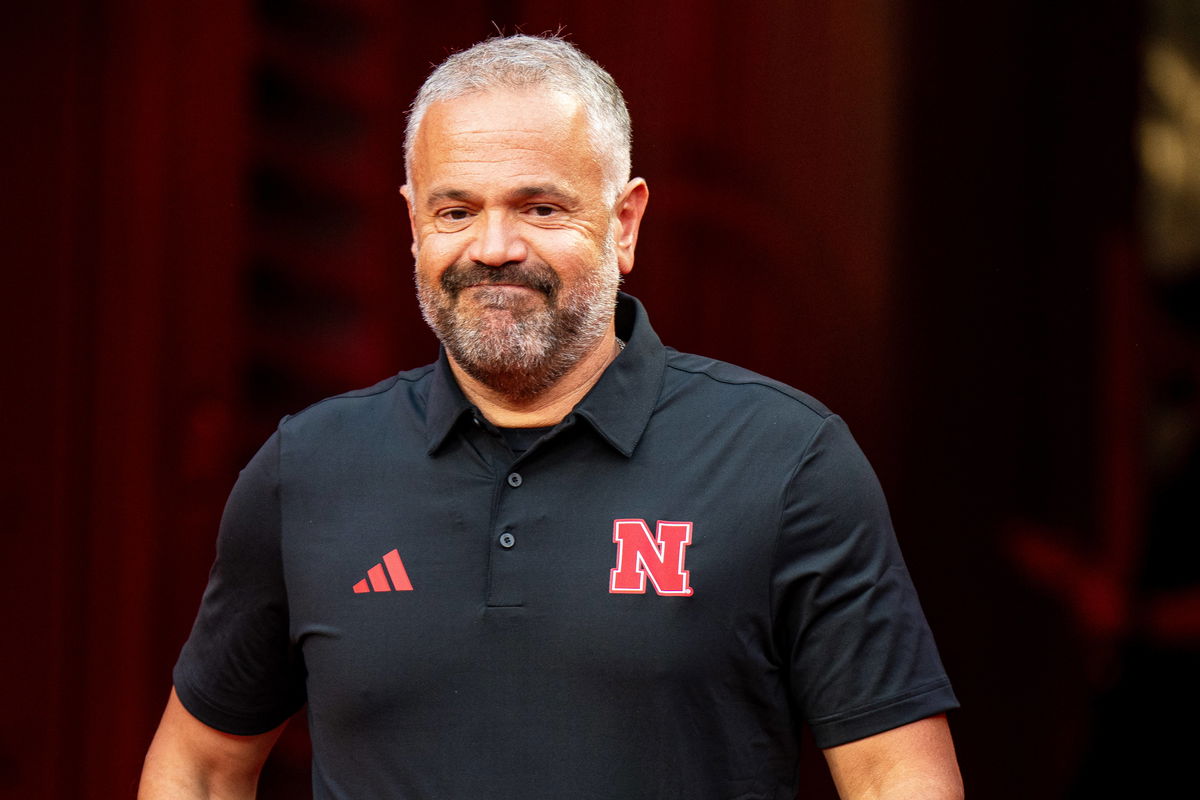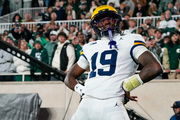
Imago
Matt Rhule faces defensive woes ahead of the Northwestern game.

Imago
Matt Rhule faces defensive woes ahead of the Northwestern game.
Nebraska made the leap to the Big Ten on June 12, 2010, fresh off a strong run under Bo Pelini. At that time, he was 19-8 in his first two seasons, and the program was just 9 years removed from a national title game. But the move wasn’t exactly graceful. Former HC Tom Osborne (1973 to 1997) didn’t hold back, pointing fingers at Texas, OU, and even Oklahoma State for the Huskers’ woes. Fast forward to today, and Nebraska has struggled to find the same dominance in the Big Ten, leaving fans questioning if the switch was worth it.
Watch What’s Trending Now!
Nebraska may have shown flashes in the Big Ten, but true success has been elusive. Since joining the conference in 2011, the Huskers sit at roughly 64-68 in league play and haven’t captured a Big Ten title, while Michigan claimed the three back-to-back championships (2021–2023). Now, Matt Rhule’s leadership in 2023 and 2024 brought improvement, including a 7-6 finish in 2024, capped with a Pinstripe Bowl victory. But the program is still chasing the consistency and dominance it once had. So which conference could be the right fit for Nebraska?
On September 22, OutKick’s Clay Travis laid it out plain and simple: Nebraska might just be in the wrong conference. “I don’t mean pick the wrong conference for money, the Big Ten has made Nebraska a lot of money,” he said. So, the issue isn’t financial; it’s cultural. But which conference would truly suit them? “I think that Nebraska actually should be in the SEC, I don’t think it’s ever going to happen.” said Travis. Here he argued that Cornhuskers players and fans would rather face southern rivals like Texas, Missouri, Oklahoma, Arkansas, and Texas A&M instead of the likes of Oregon, Washington, Rutgers, or Maryland. And then he pointed to recruiting as a key factor.
ADVERTISEMENT
Nebraska is in the wrong conference@ClayTravis pic.twitter.com/82Uu2o6Hjj
— OutKick (@Outkick) September 23, 2025
“Historically, Nebraska went south,” said Travis. “It’s a small state that doesn’t produce a ton of elite athletes. They recruited from Texas, Oklahoma — that’s where the talent was.” So in his view, Nebraska’s natural rivals and recruiting footprint simply don’t align with the northern-heavy Big Ten. Although the B1G isn’t factoring environmental impact into its football schedule. Instead, the conference is all about the game. “Our priority in football scheduling is to balance geography and travel to create compelling matchups in a flexible format,” said the Big Ten in August 2024. Because of the goal? Maximizing opportunities for B1G teams to chase CFP spots and, ultimately, the national title. But as Clay Travis pointed out, the Big Ten’s focus on logistics and playoff access doesn’t fix the bigger issue: a mismatch in traditions and rivalries.
According to Travis, Nebraska is now facing that clash in the Big Ten. Look, geography and travel may be balanced, but fans and players still feel the disconnect. “The best rival in the Big Ten? Iowa? Maybe,” said Travis. “I would argue that Nebraska would rather play Texas, Oklahoma, Missouri, Texas A&M, and Arkansas: five SEC teams before Iowa.” And then Minnesota? Not really a rival. Wisconsin? No. Michigan? Sure, it’s a big brand, but very different in culture. As Travis put it best, stating, “Culture matters, and the disconnect here is significant.” So, it’s more than geography; it’s a clash of identities, and Nebraska’s heart might belong elsewhere. Now, while Travis pointed to the SEC as a better fit for the Cornhuskers, CFP pressures are forcing Matt Rhule into tough decisions.
ADVERTISEMENT
Nebraska HC’s bold take
Matt Rhule didn’t hold back when explaining why the Cornhuskers backed out of their future nonconference games with Tennessee in 2026 and 2027. Appearing on The Triple Option podcast, Rhule laid it out bluntly: with a nine-game B1G schedule, there’s little incentive to play tough nonconference opponents. “Why in the world would a Big Ten team who’s already playing nine conference games ever play one of those games?” he asked. And Rhule was frank about the strategic reasoning behind the move, tying it directly to CFB positioning.
ADVERTISEMENT

ADVERTISEMENT
“I love the SEC, I’m not anti-SEC,” he said. “But there’s some SEC teams that only played three away games last year. We go on the road five times in the Big Ten with no neutral sites. Early-season wins didn’t mean a thing. What matters is how good your offense is at the end of the season.” Simply put, losses, even against ranked teams, can hurt a playoff resume, so minimizing risk is key. Now with the Big Ten stacked, Rhule doesn’t see the point in padding the schedule.
“At the end of the day, it’s really what you look like in the last month of the season,” he said. “If you’re scoring points and blowing people out late, you’re going to make the playoffs.” So for Nebraska, it’s a careful balancing act between competition, strategy, and the CFP.
Top Stories
Sean Payton Announces Retirement Plans as Broncos HC Demands Improvement From Bo Nix & Co. Before Playoffs

Greg Biffle’s $4M Worth Prized Possession Still Without a Buyer Leaves NASCAR Fans Heartbroken

LIV Golf Braces for Another Possible Exit in Wake of Brooks Koepka Departure

Biff Poggi All But Confirms Bryce Underwood’s Michigan Future After Announcing His Own Departure

Roger Federer Draws Criticism from Swiss Government Chief for Tourism Boom in Country

NASCAR World Mourns as Former Watkins Glen President Michael Printup Passes Away at 60

ADVERTISEMENT
ADVERTISEMENT
ADVERTISEMENT

